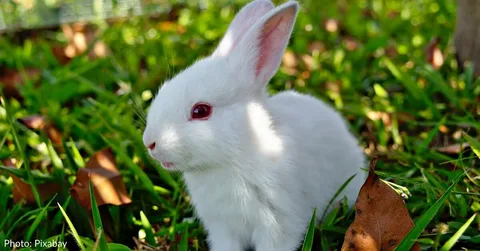Exploring Behavioral Adaptations in Domesticated Rabbits
Domesticated rabbits exhibit a fascinating array of behavioral adaptations that have evolved over centuries of interaction with humans. From social behaviors to feeding habits and defense mechanisms, these adaptations reflect the rabbit’s ability to thrive in diverse environments while forming close bonds with their human companions.
Bonding with Humans
Domesticated rabbits are highly social animals capable of forming strong bonds with their human caregivers. They thrive on companionship and interaction, often seeking out affection and attention from their owners. Through positive reinforcement and gentle handling, rabbits can develop trusting relationships with humans, enriching their lives and enhancing their overall welfare.
Interaction with Other Pets
Rabbits can also exhibit social behaviors towards other pets in the household, such as dogs and cats. With proper introductions and supervision, rabbits can coexist peacefully with other animals, forming unique interspecies relationships based on mutual respect and understanding. However, it’s essential to monitor interactions and ensure the safety of all animals involved.
Feeding Behaviors
Grazing and Foraging
In the wild, rabbits are herbivorous animals that graze on a variety of grasses, herbs, and leafy greens. Domesticated rabbits retain their natural instinct to graze and forage for food, often preferring a diet rich in fresh hay, vegetables, and occasional treats. Providing ample opportunities for grazing and foraging helps satisfy their natural feeding behaviors and promotes dental health and digestive function.
Dietary Preferences
Each rabbit may have individual dietary preferences and tastes, influenced by factors such as age, health, and past experiences. Some rabbits may prefer certain types of vegetables or herbs over others, while others may enjoy exploring new foods and flavors. It’s essential to offer a diverse and balanced diet that meets their nutritional needs and encourages healthy eating habits.
Reproductive Behaviors
Courtship and Mating
Reproductive behaviors in domesticated rabbits typically occur in response to hormonal cues and seasonal changes. During the breeding season, male rabbits may display courtship behaviors such as chasing, circling, and vocalizations to attract female mates. Once a pair forms a bond, mating occurs, leading to the conception of offspring.
Nesting and Parental Care
Pregnant female rabbits, known as does, exhibit nesting behaviors as they prepare for the arrival of their kits. They gather materials such as hay, straw, and fur to construct a cozy nest, where they give birth and nurse their young. The mother provides essential care and protection to her offspring, grooming them and ensuring they stay warm and nourished.
Defense Mechanisms
Flight Responses
Rabbits are prey animals with a strong instinct for self-preservation, often relying on flight responses to escape potential threats. When confronted with danger, rabbits may flee at high speeds, zigzagging and darting unpredictably to evade capture. Their powerful hind legs enable them to cover considerable distances quickly, seeking refuge in burrows or dense vegetation.
Thumping Behavior
Thumping is a common defensive behavior observed in rabbits, where they rhythmically pound their hind legs against the ground to signal danger to other members of their group. Thumping may serve as a warning to alert nearby rabbits of potential threats, such as predators or unfamiliar disturbances in their environment.
Communication Methods
Vocalizations
Rabbits use a variety of vocalizations to communicate with each other and with humans. These vocalizations range from soft grunts and purring sounds of contentment to loud shrieks and screams of distress. Each vocalization conveys different messages and emotions, helping rabbits express their needs and intentions.
Body Language
Body language plays a crucial role in rabbit communication, with subtle cues and gestures conveying a wealth of information about their mood, intentions, and social status. Ears held upright may indicate alertness or curiosity, while ears flattened against the head may signal fear or aggression. Similarly, tail position, posture, and facial expressions provide additional insights into the rabbit’s emotional state.
Environmental Adaptations
Temperature Regulation
Rabbits are sensitive to extreme temperatures and have evolved various adaptations to regulate their body temperature and stay comfortable in changing environmental conditions. During hot weather, rabbits may seek shade and cool, well-ventilated areas to avoid overheating, while in cold weather, they may huddle together or burrow into bedding to conserve body heat.
Shelter Seeking
In the wild, rabbits seek shelter in burrows or dense vegetation to protect themselves from predators and adverse weather conditions. Domesticated rabbits retain this instinctual behavior, often seeking out enclosed spaces or hiding spots where they feel safe and secure. Providing suitable shelters and hideaways in their living environment helps meet this natural need and reduces stress.
Conclusion
In conclusion, the behavioral adaptations of domesticated rabbits reflect their evolutionary history as social, prey animals capable of thriving in diverse environments. Understanding these adaptations is essential for providing rabbits with appropriate care, enrichment, and environmental stimulation that promote their physical and psychological well-being. By recognizing and respecting their natural behaviors, rabbit owners can forge deep, meaningful bonds with their furry companions and create fulfilling lives for both humans and rabbits alike.
FAQs (Frequently Asked Questions)
- Do rabbits need companionship? Yes, rabbits are social animals that benefit from companionship and interaction with conspecifics or other pets. Providing a compatible companion or spending quality time interacting with the rabbit can help prevent loneliness and promote their overall well-being.
- What do rabbits eat in the wild? In the wild, rabbits primarily graze on a variety of grasses, herbs, and leafy greens. They may also consume bark, twigs, and other plant materials for additional nutrients and roughage.
- How can I prevent my rabbit from becoming stressed? Providing a safe, enriched environment with ample opportunities for exercise, social interaction, and mental stimulation can help prevent stress in rabbits. Minimizing sudden changes in their routine or environment and ensuring access to shelter, food, and water are also essential for maintaining their well-being.
- Are there specific breeds of rabbits better suited for indoor living? While all domesticated rabbits can adapt to indoor living with proper care and supervision, some breeds may be
